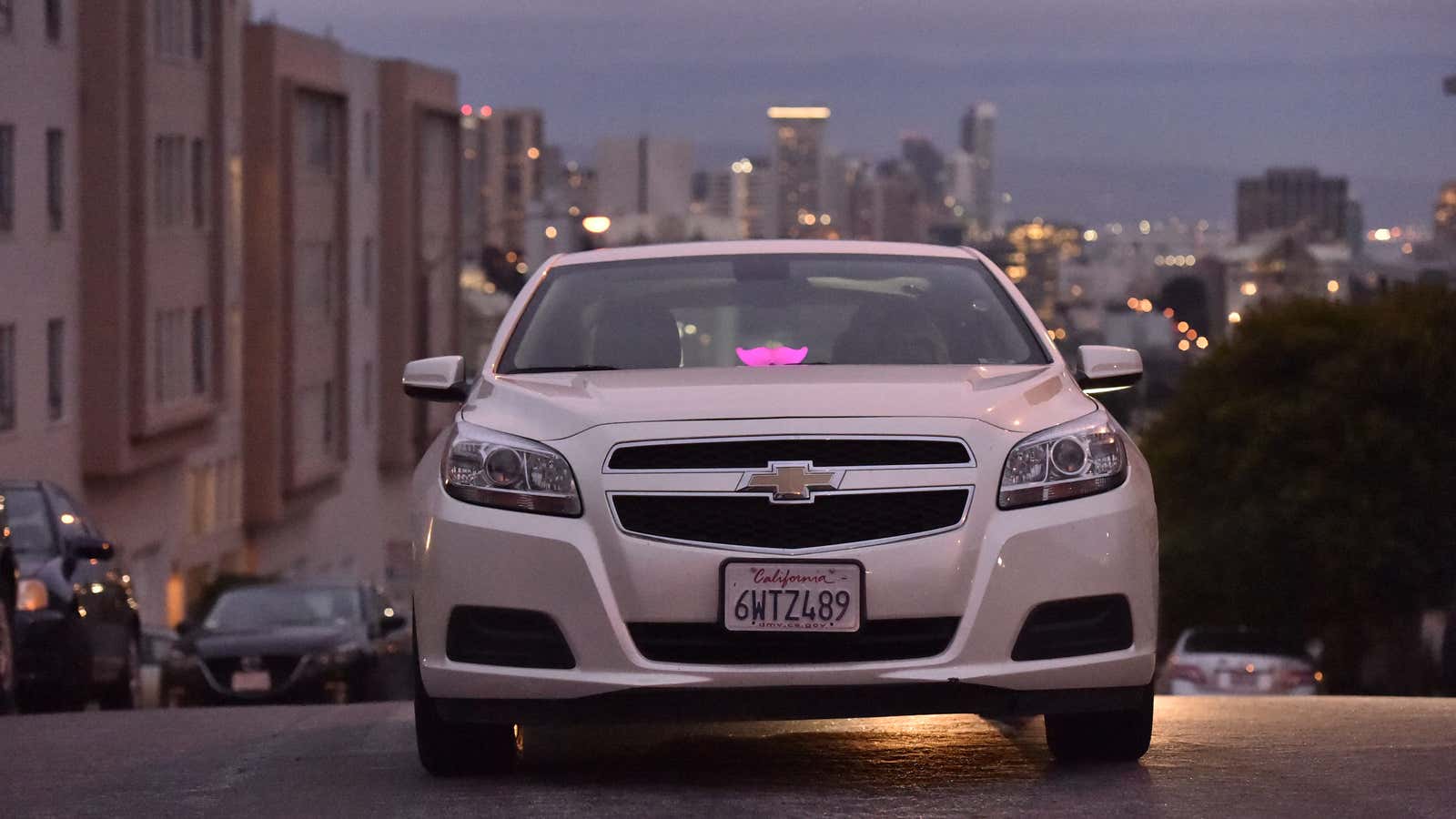General Motors and Lyft plan to begin testing self-driving taxis within the year, the Wall Street Journal reported Thursday.
The autonomous fleet will be made up of Chevrolet Bolts and will hit public roads in a currently undisclosed city. Initially, the self-driving cars being dispatched will still have drivers in the cockpit who can grab the controls if necessary. Customers booking a ride on Lyft will be able to opt in or out of the pilot program from Lyft’s app.
Here’s a bit more from the Journal:
Lyft has a prototype smartphone application that would show customers the option of being picked up by an autonomous car. It would have options to contact a GM OnStar assistant for questions or to aid the rider if some problem occurred. The app also allows the passenger to tell the car when to “go” and when he is finished with the ride and the car can leave.
The app is only a prototype at this point, but it speaks to how the company is trying to solve issues of trust with an autonomous vehicle.
“GM continues to make progress on our previously announced plans related to an integrated on-demand autonomous network with Lyft,” the company said in a statement. “We have nothing specific to announce in relation to potential rollout of vehicles and technologies at this time.”
General Motors has spent the first several months of 2016 positioning itself for the driverless future. In January, GM invested $500 million in Lyft and announced that it had partnered with the ride-hailing company to create an “autonomous on-demand network.” GM has since launched Maven, a car-rental service akin to Zipcar; acquired the remains of ride-hailing company Sidecar; acquired Cruise, a startup that develops self-driving technologies for cars; and debuted Express Drive, a short-term car rental program for Lyft drivers that will also help build out infrastructure for self-driving vehicles.
Similar developments are rolling on the regulatory front. Late last month, many of the companies involved with self-driving technologies formed the Self-Driving Coalition for Safer Streets, a lobbying group that will pressure federal policymakers as they grapple with the regulatory questions posed by autonomous vehicles. The group includes Google, Ford, Uber, Volvo, and Lyft, and is being led by David Strickland, former head of the National Highway Traffic Safety Administration.
Should GM and Lyft’s self-driving cars begin servicing passengers within the next year, it would likely give them a jump on Uber, which has said it will add autonomous vehicles to its service by 2020. Uber poached dozens of staff from Carnegie Mellon University last year to build a research facility for mapping and self-driving car technologies in Pittsburgh. This past March, the company was rumored to be shopping around for a large order of autonomous cars.
Becoming among the first to put self-driving cars on the road will come with its own challenges. Aside from regulatory issues, GM and Lyft will have to balance moving quickly enough for competitors with proceeding slowly enough for consumers. Just because automakers and tech companies are ready for driverless cars doesn’t mean their customers are.
